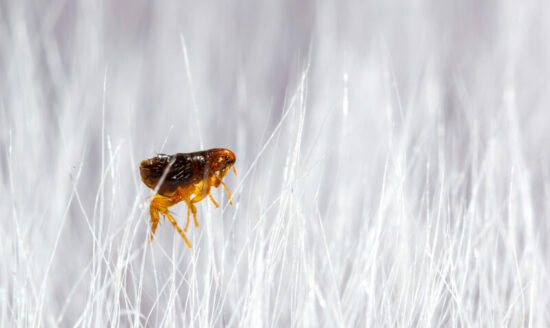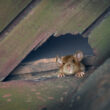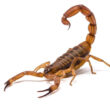Learning what attracts fleas is one of the best ways to make sure these little critters don’t bother you (or your pets). But interestingly enough, many people have a misinformed idea on what draws them in!
This guide will teach you what fleas are attracted to, and give you some tips on how you can use that to keep your home flea-free.
Table of Contents
What Attracts Fleas?
Having fleas in the house is something that no homeowner wants. In addition to causing itching and distress to your pets and to your family, fleas are carriers of a number of nasty diseases. We’re talking about things like the plague and murine typhus for humans and mites and tapeworms for animals.
Even if you use a flea control product for your pet, you may find that fleas can still be an issue. There are a number of things that attract fleas, and you may be unwittingly making them feel welcomed.
Let’s take a look at what fleas seem to crave the most. A little bit of knowledge may help you in your battle against fleas and the problems they can cause.
1. Carbon Dioxide
Although it may sound kind of strange, carbon dioxide is one of the main things that attracts fleas to humans. It’s not that fleas find carbon dioxide attractive in the sense that they crave it or like the smell of it. Instead, they use increased concentrations of carbon dioxide to find their next host.
Humans and pets give off carbon dioxide every time they exhale. Fleas have an excellent sense of smell, and they know that the smell of carbon dioxide is a sign that a potential host could be nearby. They will seek out the source of the carbon dioxide, and before you know it, you’ll have a flea problem on your hands.
Expert Tip: You may notice that one person or a certain pet seems to be bothered more by fleas. This is likely because they are giving off more carbon dioxide than others around them. Fleas will opt for the host that gives off the most carbon dioxide.
2. Warmth
Fleas are attracted to areas where it’s warm and comfortable. They don’t really like it when it’s cold, and they will seek out warmth wherever they can find it. Most often, that warmth will come from inside the fur of your dog, cat or other pet. Fleas will burrow down into your pet’s fur to be as close as possible to the animal’s body heat.
Fleas also like the warmth of humans, and that is one of the reasons that you and your family may be suffering from flea bites.
The ideal temperature for a flea is between 65 and 95 degrees Fahrenheit. In the winter months, if you keep your house pretty toasty, then most fleas will probably choose to stay nestled inside your pet’s fur. However, if your house is chilly in the winter, then the fleas will most likely choose to hide out in your home’s carpeting, bedding or throw rugs. Many pet owners get fooled into thinking that their flea problem is gone if they don’t see fleas in their pet’s fur. It often just means that the fleas have found someplace warmer to hang out!
3. Darkness & Shadows
Depending on a flea’s stage of life, it will either seek out more light or more darkness. Flea eggs and larvae are going to do their best hidden in darkness until they have time to develop. This is why a female flea will lay her eggs deep in an animal’s fur or down inside carpet fibers. This kind of environment provides both the safety of darkness as well as the feces of adult fleas, which is larvae’s favorite food.
However, once the flea becomes an adult it will leave its dark home and begin to seek a host. Here’s where it gets a little strange because an adult flea is not attracted to light as much as it looks for shadows and changes in light.
Why is this the case?
Even though fleas are attracted to light, the thing they look for is a change in lighting. For example, if you walk past a light-filled window, a flea will notice the sudden change in light and will realize that a potential host is around. So it’s a combination of movement and light that will get a flea’s attention.
4. Wildlife On Your Property
If you have a dog, and that dog has fleas, then it’s not too hard to figure out where those fleas came from. Maybe you took your pet to the dog park, or maybe your dog came into contact with another dog while you were out for a walk. But what about if you have a housecat with fleas? If your cat never leaves the house, then where did the fleas come from?
As unpleasant as this sounds, those fleas could very well have come from wildlife on your property. Rodents, feral cats, rabbits, deer, raccoons and other mammals are commonly infested with fleas. Given the right conditions, those fleas will move to a more desirable host. That host could be your cat or dog. If outdoor fleas jump onto you, you may be an inadvertent middle person.
Expert Tip: As tempting as it may be to feed cute wildlife like deer or rabbits, we don’t advise encouraging wild animals to hang out in your yard. Not only do they often carry their own kind of diseases, but you run the risk of bringing fleas into your home.
5. A Messy Yard
You know that pile of lawn clippings and leaves that you’ve been meaning to clean up? Or what about the garbage can that is always tipping over or has a loose lid? It’s time to get out there and deal with these issues because your messy yard could be attracting fleas (or animals that carry them).
Not only will you have the benefit of a tidy property, but you will be removing anything that may be bringing animals like raccoons, rats, mice, feral cats and even coyotes to your yard. As we mentioned earlier, mammals in the wild are swarming with fleas and other unsavory things. A clean and well-maintained yard will tend to discourage animals from hanging out.
Make sure to also clean up puddles or any kind of standing water that may be attracting wildlife that carry fleas.
How Can You Attract Fleas To Kill Them?
Learning what attracts fleas in order to kill them might seem counterintuitive, especially since we have been discussing ways to avoid attracting fleas. However, we are going to talk about attracting fleas with that purpose in mind. Unless you call in a pest control company (and you should if things are out of control) the best way to handle a flea issue is with some kind of trap.
There are a few different types of traps that fleas are attracted to. And the nice thing is you can either buy or make them yourself! Whichever kind of trap you choose, it will most likely utilize some kind of heat or source of carbon dioxide to attract the fleas.
Expert Tip: Read all instructions carefully before choosing a flea trap. You want to make sure that the trap is safe to use around pets and kids.
Sticky Pads
Flea traps with sticky pads are very common, because they work. Placed near your animal, fleas will be attracted to the carbon dioxide coming from your pet. Once the flea jumps into the trap, they will adhere to the sticky pad.
Many people choose this type of trap because it’s inexpensive and non-toxic. Since you will want to place the trap near your pet, it’s good to use a pet-safe option. However, if you have a curious pet or one that likes to chew things, then this may not be the right option for you.
Traps With Heat Lamps
Because fleas are attracted to heat, choosing a trap that’s equipped with a small light bulb is often a good idea. The idea is that the heat from the bulb will attract the fleas, then they will get stuck to the sticky pad.
Make Your Own Trap
If you want to go the do-it-yourself route, then a small bowl filled with water and a few drops of dish soap will work. To attract the fleas into the trap, place a few battery-operated tea lights next to the bowl. The idea is that once the fleas are attracted to the heat and light, they will jump into the water and drown. This may not be the best option if you think that your pet is going to drink the water or spill it.
If you can’t seem to get a handle on your flea issue yourself, it might be a good idea to consult with a pest control specialist. They have the experience that’s needed to get rid of the fleas for good.
Conclusion
Now that you know what attracts fleas, it should be quite easy to prevent them from bothering you in the future. All it takes is a little bit of work and some habit changes, and you’ll be able to discourage these little critters or get rid of them entirely.
If you have any questions about what fleas are attracted to or have some ideas that have worked for you, send them our way! We’re always happy to hear what the DIY community is doing when it comes to pest control.


